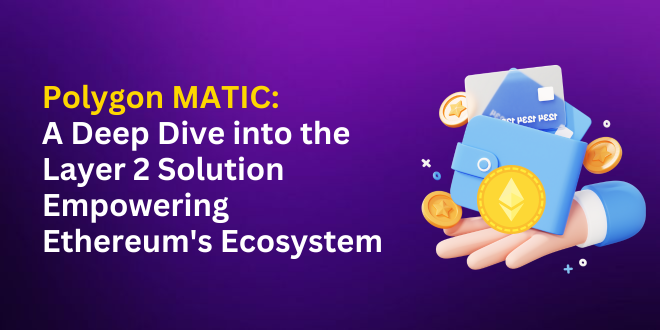Introduction
The rapid rise of decentralized applications (DApps) built on Ethereum’s Ecosystem has brought significant attention to the scalability challenges faced by the network. As the demand for Ethereum’s Ecosystem-based solutions grew, so did the need for an effective scaling solution.
Enter Polygon Matic (previously known as Matic Network), a Layer 2 scaling solution that aims to address Ethereum’s scalability limitations while maintaining compatibility and security. In this article, we will explore Polygon’s (Matic token) architecture, its key features, and its impact on Ethereum’s ecosystem.
Polygon matic is an open-source framework designed to provide a scaling solution for Ethereum, enabling faster and cheaper transactions without compromising on security. It achieves this by leveraging a combination of sidechains, plasma chains, and the Ethereum’s Ecosystem mainnet. At its core, Polygon (Matic token) is a Layer 2 solution that operates as a “commit chain” and allows developers to build and deploy their own customized chains, known as “Polygon chains” or “Polygon sidechains,” while still benefiting from Ethereum’s security and decentralization.
One of the key features of Polygon Matic is its compatibility with Ethereum’s Ecosystem. DApps built on Ethereum’s Ecosystem can seamlessly migrate to Polygon Matic with minimal modifications, allowing them to take advantage of Polygon’s enhanced scalability and low transaction costs. This interoperability enables a smooth transition for developers and users, ensuring that the existing Ethereum ecosystem can expand without disruptions.
Polygon Matic offers multiple types of sidechains to cater to different use cases and requirements. One of the main types is the “Proof-of-Stake” (PoS) chain, where consensus is achieved through a set of validators who stake their tokens as collateral.
This PoS architecture ensures fast block confirmations and significantly reduces transaction fees and Gas Fees compared to the Ethereum mainnet. Polygon matic token also supports other variants, such as the “Plasma” framework, which allows for even higher scalability by utilizing a hierarchical structure of child chains connected to the Ethereum’s Ecosystem root chain.
The benefits of Polygon matic extend beyond scalability and cost-efficiency. Polygon matic sidechains are highly customizable, enabling developers to tailor the chain parameters to their specific needs. This flexibility opens up possibilities for various applications, including gaming, decentralized finance (DeFi), non-fungible tokens (NFTs), and more. Moreover, Polygon Matic Wallet and architecture supports smart contracts, making it a powerful platform for building complex decentralized applications.
In terms of security, Polygon matic inherits the security guarantees of the Ethereum mainnet. The mainnet acts as the final arbiter of disputes and provides a security checkpoint for Polygon chains. This ensures that the assets and transactions on Polygon Matic remain secure and resistant to malicious attacks. Additionally, Polygon matic token employs a decentralized network of validators to secure the PoS chains, further enhancing the overall security of the ecosystem.
The adoption of Polygon Matic Wallet has seen significant growth in recent years, with numerous projects and DApps migrating to the network. The lower transaction costs and improved scalability offered by Polygon Matic token have attracted developers and users seeking a more efficient alternative to the Ethereum mainnet. Some notable projects that have embraced Polygon include Aave, SushiSwap, and Decentraland, among many others.
Polygon’s success also extends to its native token, MATIC. MATIC plays a crucial role in the Polygon matic ecosystem, serving as a means of payment for transaction fees, securing the network through staking, and participating in the network’s governance. The Matic token has gained substantial value and recognition within the crypto community, reflecting the growing confidence in Polygon’s capabilities and potential.
Conclusion,
Polygon matic has emerged as a vital Layer 2 scaling solution for the Ethereum ecosystem. By leveraging a combination of sidechains, blockchains technology and the Ethereum mainnet, Polygon matic offers a scalable, cost-effective, and compatible framework for developers and users. Its flexibility, security, and seamless integration with Ethereum’s Ecosystem have contributed to its widespread adoption and expansion.







